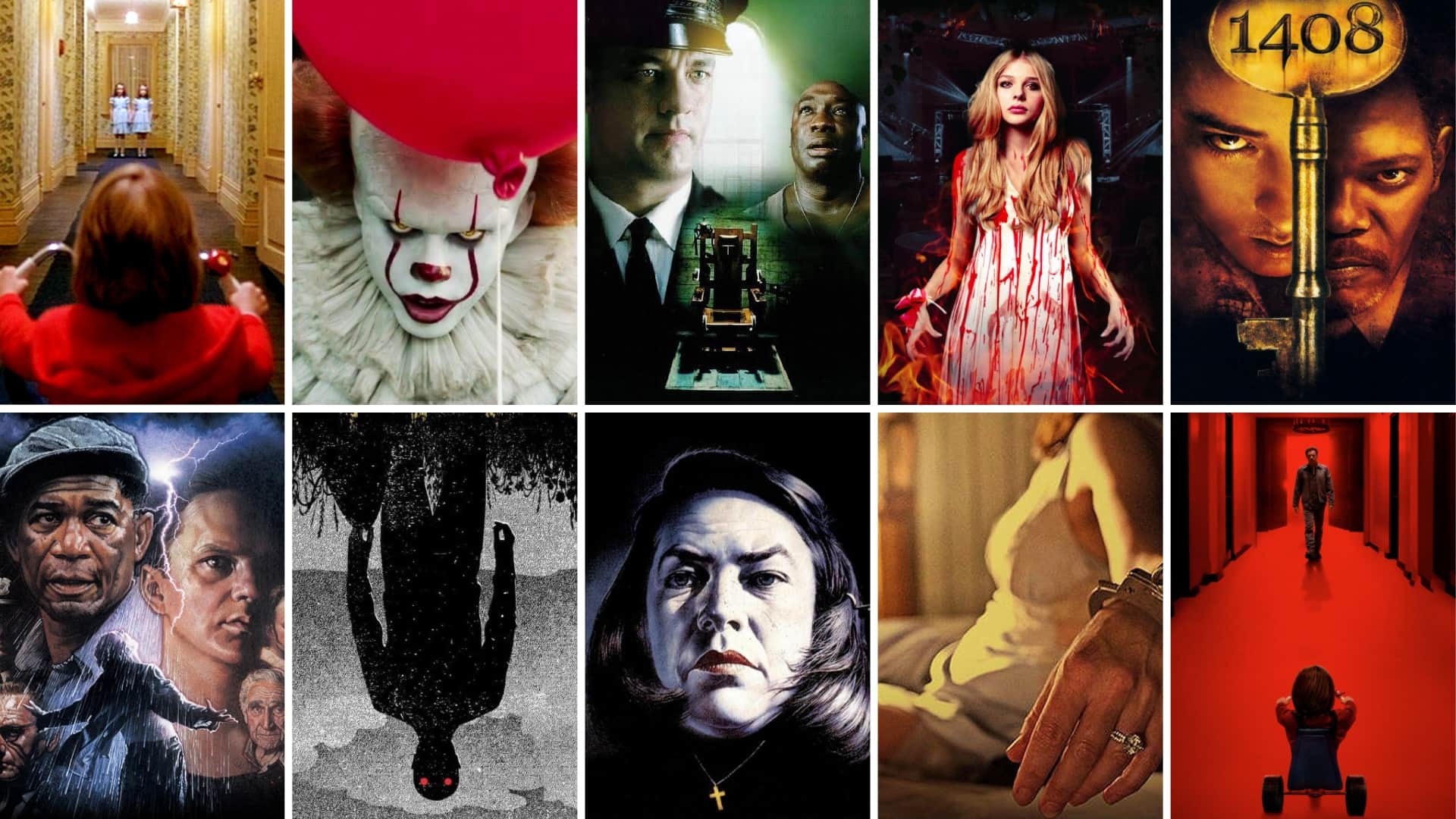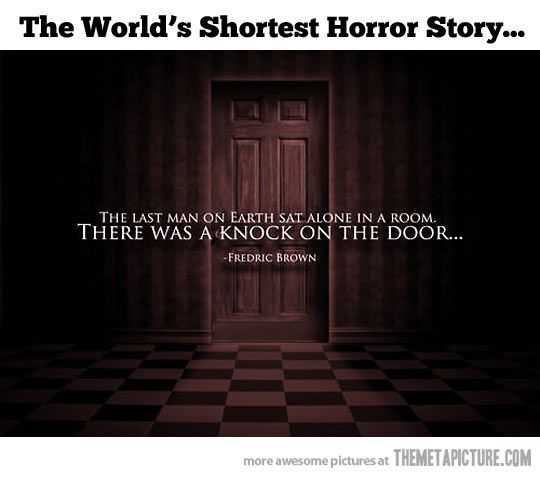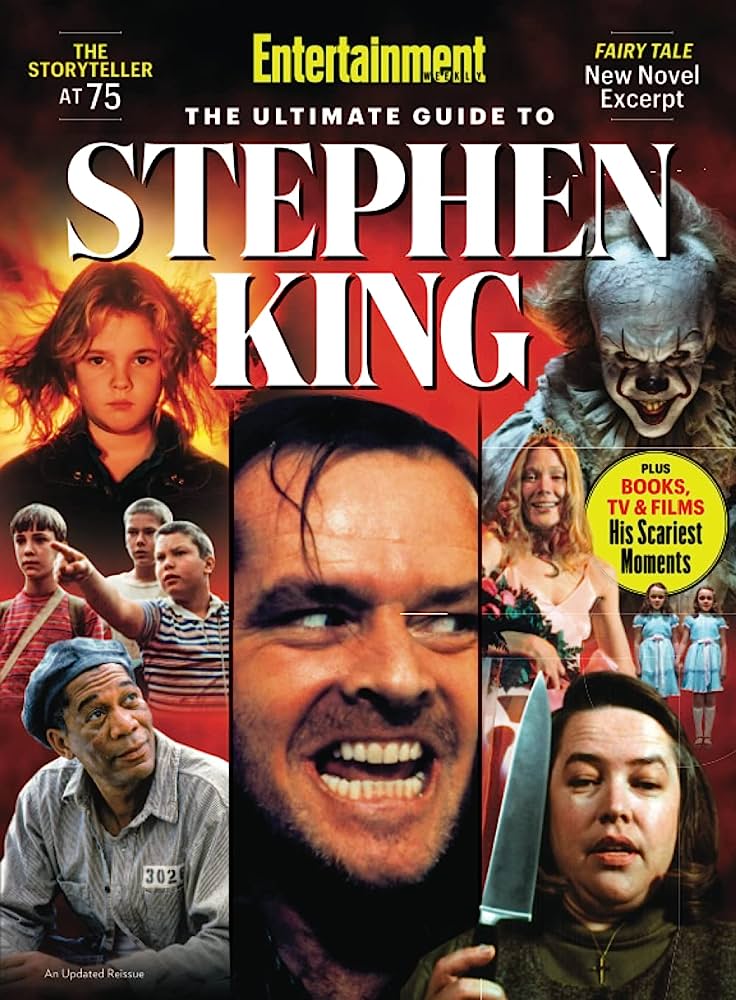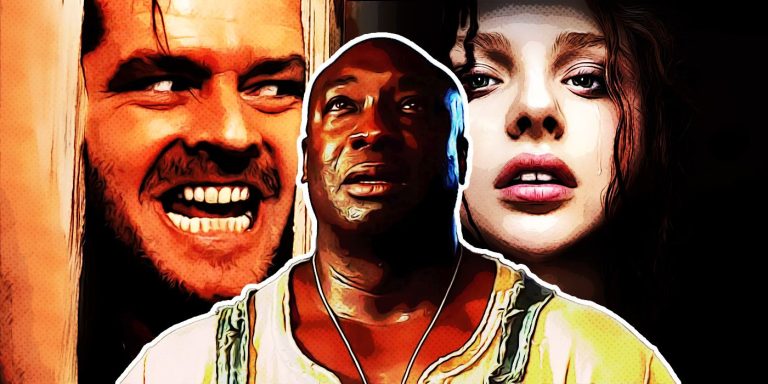Stephen King Movies: A Guide To Cinematic Themes And Motifs
If you’re a fan of spine-chilling tales and heart-pounding suspense, then you’re probably familiar with the master of horror himself, Stephen King. From his terrifying novels to their equally bone-chilling film adaptations, Stephen King has left an indelible mark on the world of cinema. In this guide, we’ll explore the captivating world of Stephen King movies, delving into the recurring themes and motifs that make them so mesmerizing.
When it comes to Stephen King movies, there’s no shortage of hair-raising moments and twisted storylines. From the iconic “The Shining” to the haunting “IT,” these films have captivated audiences for decades. But what sets them apart? What makes them so enthralling? In this guide, we’ll take a deep dive into the cinematic universe of Stephen King, exploring the common threads that weave through his stories and examining the powerful motifs that keep us on the edge of our seats. So grab your popcorn, turn off the lights, and prepare to be immersed in the captivating world of Stephen King movies.

Stephen King Movies: A Guide to Cinematic Themes and Motifs
Stephen King is a renowned author known for his captivating storytelling and ability to create chilling tales of horror and suspense. Many of his novels have been adapted into movies, captivating audiences with their unique themes and motifs. In this article, we will explore the world of Stephen King movies, delving into the recurring themes and motifs that make them so captivating.
Horror and Supernatural Elements
Stephen King is often referred to as the “Master of Horror,” and it is not without reason. His works are heavily influenced by supernatural elements, creating an atmosphere of fear and suspense. From haunted houses to malevolent spirits, King’s movies often explore the darker side of the human psyche. These supernatural elements add an extra layer of tension and intrigue to the narratives, keeping audiences on the edge of their seats.
One of the most iconic examples of King’s exploration of horror and the supernatural is “The Shining.” Directed by Stanley Kubrick, the film follows the story of a writer who takes a job as a winter caretaker at an isolated hotel. As the winter progresses, he becomes increasingly influenced by the malevolent spirits haunting the hotel, leading to a descent into madness. The film masterfully combines psychological horror with supernatural elements, creating a haunting atmosphere that lingers long after the credits roll.
Psychological Thrills and Mind Games
While supernatural elements are a prominent feature in Stephen King movies, psychological thrills and mind games also play a significant role. King’s stories often delve into the depths of the human mind, exploring the fears, insecurities, and dark desires that lurk within. This psychological aspect adds a layer of complexity to the narratives, making them more than just simple horror stories.
In the movie “Misery,” based on King’s novel of the same name, we witness the psychological torment experienced by a writer held captive by an obsessed fan. The film explores themes of obsession, manipulation, and the power dynamics between the captor and the captive. The psychological tension builds throughout the movie, keeping the audience captivated and immersed in the characters’ psychological struggles.
In addition to the supernatural and psychological elements, Stephen King movies often touch upon social issues, such as addiction, trauma, and the human capacity for evil. These themes add depth and substance to the narratives, elevating them beyond mere horror stories and making them thought-provoking and impactful.
Adaptations and Filmmaking Styles
Stephen King’s vast body of work has been adapted into numerous movies, each with its own unique filmmaking style. Directors bring their own vision and interpretation to King’s stories, resulting in a diverse range of movies that cater to different tastes and preferences.
One notable aspect of Stephen King movie adaptations is the attention to detail in capturing the essence of his written works. Filmmakers strive to recreate the atmosphere, characters, and settings that readers have come to love, ensuring a faithful adaptation that resonates with fans. This dedication to authenticity is one of the reasons why King’s movies have such a dedicated following.
Iconic Performances and Memorable Characters
Another highlight of Stephen King movies is the exceptional performances by the actors who bring his characters to life. From Jack Nicholson’s chilling portrayal of Jack Torrance in “The Shining” to Kathy Bates’ unforgettable performance as Annie Wilkes in “Misery,” these movies have given us some of the most memorable characters in cinematic history. The talented actors embody the complexities and nuances of King’s characters, adding depth and authenticity to their portrayals.
In addition to the performances, the visual aspects of Stephen King movies are often striking and visually captivating. From the eerie landscapes in “The Mist” to the haunting imagery in “Pet Sematary,” the cinematography enhances the storytelling, immersing the audience in the dark and atmospheric world of Stephen King.
Stephen King movies have become a genre of their own, captivating audiences with their unique blend of horror, suspense, psychological depth, and memorable characters. Whether you’re a fan of supernatural tales or psychological thrillers, there is a Stephen King movie for everyone. So, grab some popcorn, dim the lights, and prepare to be enthralled by the cinematic world of Stephen King.
Key Takeaways: Stephen King Movies
- Stephen King movies often explore themes of fear and the supernatural.
- Many of King’s movies focus on the concept of small towns and the darkness that lies beneath their seemingly peaceful surfaces.
- Characters in Stephen King movies often struggle with personal demons and face moral dilemmas.
- King’s movies often incorporate elements of horror, suspense, and psychological thrillers.
- The recurring motif of childhood and the loss of innocence can be found in many Stephen King movies.
Frequently Asked Questions
1. What are some recurring themes in Stephen King movies?
Stephen King movies often explore themes of horror, fear, and the supernatural. One recurring theme is the concept of evil lurking in the ordinary. Many of his stories feature everyday settings, such as small towns or suburban neighborhoods, where dark and supernatural forces are at play. Another common theme is the exploration of the human psyche and the depths of human fear. Characters in Stephen King movies often face their own inner demons and grapple with their deepest fears.
Additionally, Stephen King movies often touch upon themes of childhood trauma and the lasting effects it can have on individuals. Many of his stories involve characters who experienced traumatic events in their youth and are haunted by them in adulthood. These themes of trauma and its aftermath add depth and psychological complexity to his movies.
2. How are Stephen King movies connected to each other?
While Stephen King movies are not directly connected in a shared cinematic universe, they often share similar themes and motifs. This is because they are adaptations of Stephen King’s novels, which are all set within his vast fictional universe. Characters, locations, and even supernatural elements may overlap between different movies, creating a sense of interconnectedness.
Furthermore, Stephen King movies often share a distinct visual style and atmosphere. Directors and cinematographers often draw inspiration from King’s writing, resulting in a consistent aesthetic across many adaptations. This helps create a cohesive experience for viewers familiar with Stephen King’s work.
3. What are some common motifs in Stephen King movies?
One common motif in Stephen King movies is the presence of a small town setting. Many of his stories are set in tight-knit communities, where the characters’ lives are intertwined. This setting allows for exploration of themes such as collective fear, mob mentality, and the dark secrets hidden beneath a seemingly idyllic surface.
Another common motif is the use of supernatural or paranormal elements. Stephen King movies often feature supernatural entities, such as ghosts, monsters, or psychic abilities. These elements add an otherworldly dimension to the stories and contribute to the sense of horror and suspense.
4. How does Stephen King’s writing style translate to the big screen?
Stephen King’s writing style is known for its vivid descriptions, rich character development, and ability to create a sense of dread. Translating these elements to the big screen can be a challenge, but many filmmakers have successfully captured the essence of King’s storytelling.
One way filmmakers achieve this is through visual storytelling. They use cinematography, lighting, and set design to create a dark and atmospheric mood that mirrors the tone of King’s writing. Additionally, they focus on bringing King’s complex characters to life, often casting talented actors who can portray the depth and complexity of his characters.
5. Why are Stephen King movies so popular?
Stephen King movies have gained popularity due to their ability to tap into universal fears and anxieties. The themes explored in his stories resonate with audiences, as they touch upon deep-seated fears and the human condition. Additionally, King’s stories often feature compelling characters who undergo intense psychological journeys, making them relatable and engaging for viewers.
Furthermore, Stephen King movies often offer a unique blend of horror, suspense, and emotional depth. They can scare audiences while also making them reflect on deeper themes and ideas. The enduring popularity of King’s novels, which serve as the source material for many of these movies, has also contributed to the popularity of their screen adaptations.
36 Absolutely Mental Stephen King Movie Adaptations – Explored – Mega Stephen King Movie List
Final Summary: Stephen King Movies – An Unforgettable Cinematic Journey
As we reach the end of our guide to Stephen King movies, it’s clear that his works have left an indelible mark on the world of cinema. From the spine-tingling horror of “It” to the haunting psychological suspense of “Misery,” King’s stories have captivated audiences and inspired countless adaptations. Through this exploration of cinematic themes and motifs, we’ve delved into the dark and twisted recesses of King’s imagination, uncovering the threads that connect his stories and make them so unforgettable.
Throughout our journey, we’ve discovered the recurring themes of fear, trauma, and the power of the supernatural. We’ve witnessed the transformation of ordinary individuals into heroes and the exploration of the human psyche in the face of unimaginable horrors. From the small-town charm of Castle Rock to the eerie presence of supernatural entities like Pennywise the Clown, King’s movies have transported us to worlds both familiar and otherworldly.
In conclusion, Stephen King movies are not just mere adaptations of his novels; they are cinematic experiences that take us on a rollercoaster ride of emotions. They remind us of our deepest fears, challenge our perceptions of reality, and leave an everlasting mark on our minds. Whether you’re a die-hard fan or a newcomer to the realm of King’s storytelling, these movies offer something for everyone. So, grab some popcorn, turn down the lights, and immerse yourself in the chilling and thrilling world of Stephen King.





